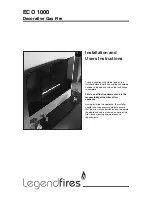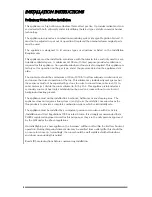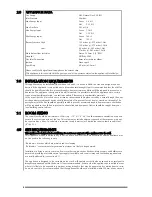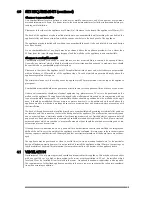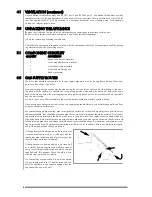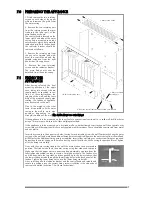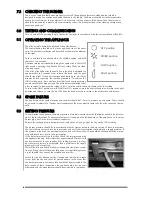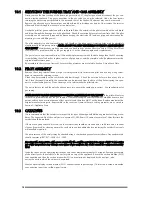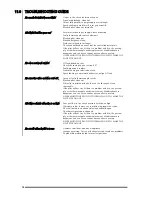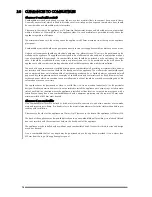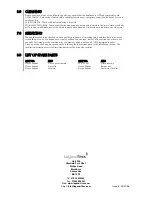
11
1100..33
C
CA
ATTA
ALLY
YSSTTSS ((ccoonnttiinnuueedd))
In order to calculate the combustion ratio for the appliance (CO/CO2) it is first necessary to express both gas
concentrations in terms of percentage. To convert from parts per million (ppm) to a percentage (%) divide the
ppm figure by 10,000. Examples : 35ppm = 0.0035%, 15ppm = 0.0015%, 5ppm = 0.0005%.
Now divide the concentration of carbon monoxide (CO) expressed in percent by the concentration of carbon
dioxide (CO2) to obtain the appliance combustion ratio.
TThhee ccoom
mbbuussttiioonn rraattiioo ooff tthhee ggaasssseess eem
miitttteedd bbyy tthhee ccaattaallyyttiicc ccoonnvveerrttoorr sshhoouulldd nnoott eexxcceeeedd 00..00001155..
If replacing, firstly, remove the decorative facia (removal is the reverse of fitting as detailed in section 8.4). The
catalysts are located on the top of the internal firebox and can be removed be unscrewing the retaining nuts
securing the clamping plate. Remove the catalyst and its seal and discard.
Refit a new catalyst and seals in reverse order, ensure the catalyst and door have good seals.
TTEESSTTIIN
NG
G FFO
OR
R FFIIR
REEB
BO
OXX LLEEA
AK
KA
AG
GEE
Appliances that are several years old or have been extensively dismantled should be checked for soundness. It
is important that all the products of combustion pass through the catalytic converter at the top of the firebox
before leaving the appliance.
The firebox is heated by lighting for a few minutes to provide a flow through the firebox. The burner is then
shut off and a smoke pellet or match introduced at the base of the fire underneath the burner tray. Large
quantities of smoke will emerge from the top of the appliance, but none should emerge from the joints or gas-
ket faces, especially around the door. It is important to note that the appliance can never be expected to be
100% smoke tight and small quantities of smoke may be seen in corners of joints and gasket faces etc without
affecting safety when the fire is in operation.
CO (%)
CO2 (%) = ratio
1100..44

